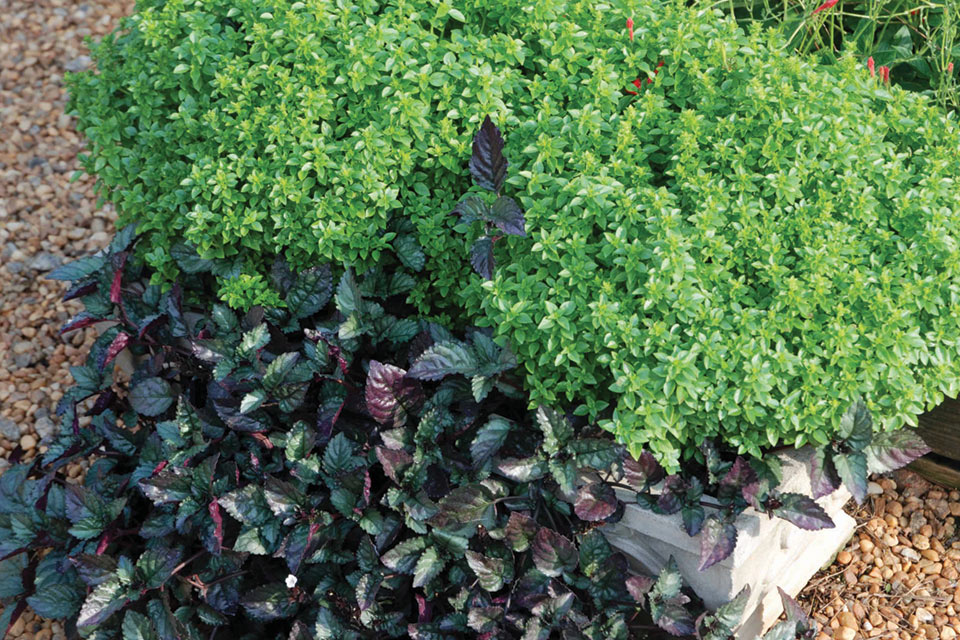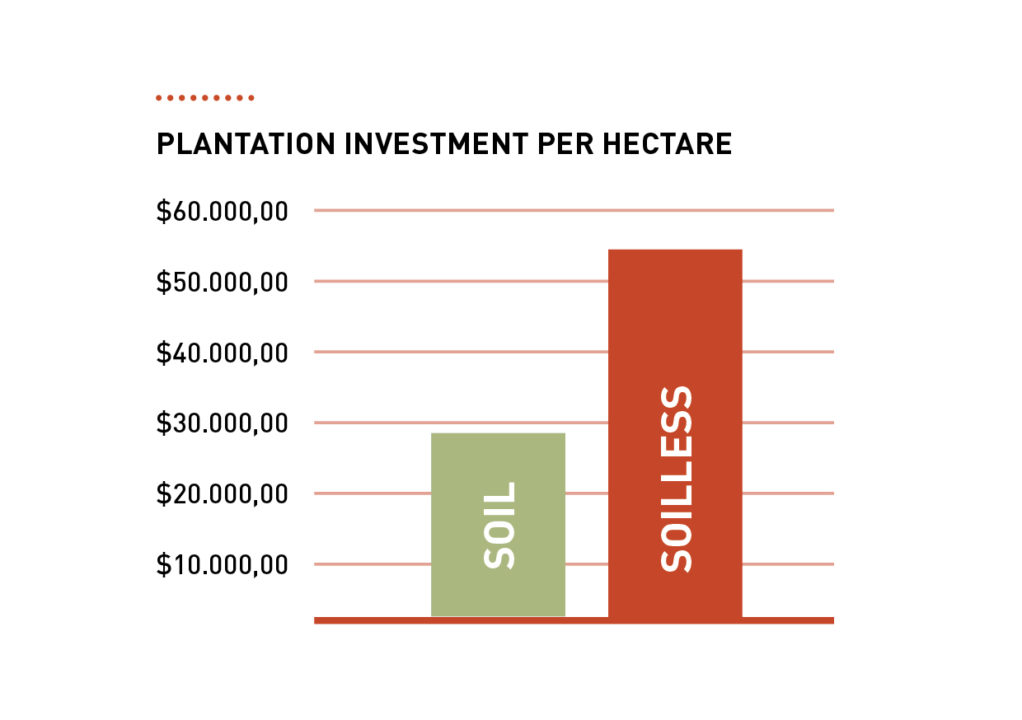Allan Armitage: Plants That Can Bring Success in the New Year

Ocimum ‘Boxwood’ and Hemigraphis ‘Moonlight Improved’
Good grief, it’s 2017!
Do you remember when we were so excited about Salvia ‘May Night’ being named the Perennial Plant Association’s Plant of the Year? Many of us still grow and sell it. The year was 1997 – 20 years ago.
If it makes you feel any better, Nepeta ‘Walker’s Low’ received the same award just 10 short years ago. Annuals keep being introduced, as well as perennials, herbs, bulbs, ferns, and veggies.
Are we gluttons for new plants, embracing each one with open arms (and wallets), or do we still believe that our customers will always demand the best? Yes, to both.
Time seems to have a way of flying by, but if there is a constant in this inconsistent world, it is wondering which plants to grow and which to talk about. Here are a few that I am always asked about.
Perennials: So Many Available, So Few Understood
Echinacea: They are not going away; however, we have introduced so many that have died in peoples’ gardens. We need to understand that fancy forms — frills, mangos, papayas, and ugly doubles are far better sold in the spring and not the fall. Choose your poison, but remember that most people will be far more successful with purples and white — and there are plenty of those.
Heuchera: This is another plant that, like a bad penny, just keeps coming back. Heuchera have fabulous breeding, but people are overwhelmed. Choose three to five cultivars for your area and push them.

Nepeta ‘Purple Wave’ with roses
Nepeta: Ten years ago, this was an obscure plant. With new breeding, people have discovered it is one of the best companion plants in the landscape and garden. Nepeta are cold hardy, excellent with roses and other woodies, and there are new cultivars every year.
Panicum: With the battle cry for native plants accompanying the battle cry for low maintenance, the switchgrasses have risen to the top. The old 8- to 12-inch forms have steadily been dwarfed and strengthened so that they provide upright plants all season, flowers and fall color later on. They are only going to get better.
Hellebores: If there is one major trend that people talk about at every meeting I attend, it is “what can I grow that the deer won’t eat?” Actually, there are many choices, but extraordinary breeding in recent years has brought colorful foliage and upright flowers to a boring old plant.
Annuals: Color Will Never Go Away
Begonia: So few annuals tolerate shade; so many begonias do. From the old and functional wax begonias, now available with huge leaves and flowers, to the newest in Bolivian hybrids and container and basket forms, these plants can be in front of landscapers and shoppers most of the season. In a word — beautiful.

Pennisetum ‘Jade Princess’
Pennisetum: Annual grasses have been pushed aside by the many perennial forms, but this one will withstand. Pennisetum are inexpensive. They have colorful foliage and flower for a long period of time. And for containers, there is no equal.
Gerbera: I am starting to see more gerbera daisies in landscapes and stores and that is a great thing. Talk about color — gerberas have some of the most brilliant flowers, and excellent foliage. The more recent introductions are more cold hardy than ever before, and may be treated as perennials in Zone 7, and maybe even Zone 6.
Combos: With the first introduction of combinations, such as Confetti, this trend continues. Even though they are costly at retail, people have so little time (or think they do) that purchasing a package deal still makes sense. I doubt a high percentage of combos bought survive more than a few months on the patio or deck, but they are a good idea that will likely continue.
Herbs: An Exploding Group That Is Perfect For The Landscape And The Deck
Lavender: So many herbs have exploded, and lavender is one that ought to be on every landscape/retail palette. People know what it is, as opposed to chervil or cilantro, and also realize that it is as ornamental as it is culinary. Lots of new introductions have appeared in the last five years. Get them out there.
Basil: Basil is one of the most ornamental herbs. It smells good, and looks as good as it is functional in foodscaping and as an herb for cooking. Colorful, ornamental foliage, easy maintenance, and a high degree of success make this one of the premier herbs.
Thyme: Ditto for my comments about basil. People like to smell it, grow it, and cook with it. Beautiful foliage, good-looking flowers, and cold hardiness are all wrapped up in a single plant. There is a huge demand for thyme.
Fennel: I have a tough time finding fennel anymore. I’m not sure why; perhaps it is a little too tall and requires some maintenance. But it is the primary host for the black swallowtail butterfly, and environmental gardeners love that. It smells like licorice, is beautiful in the landscape, and makes people feel better about attracting bees and butterflies.









